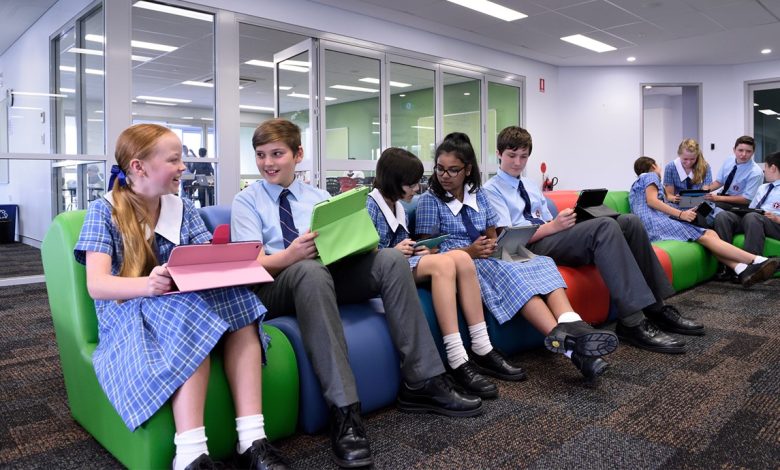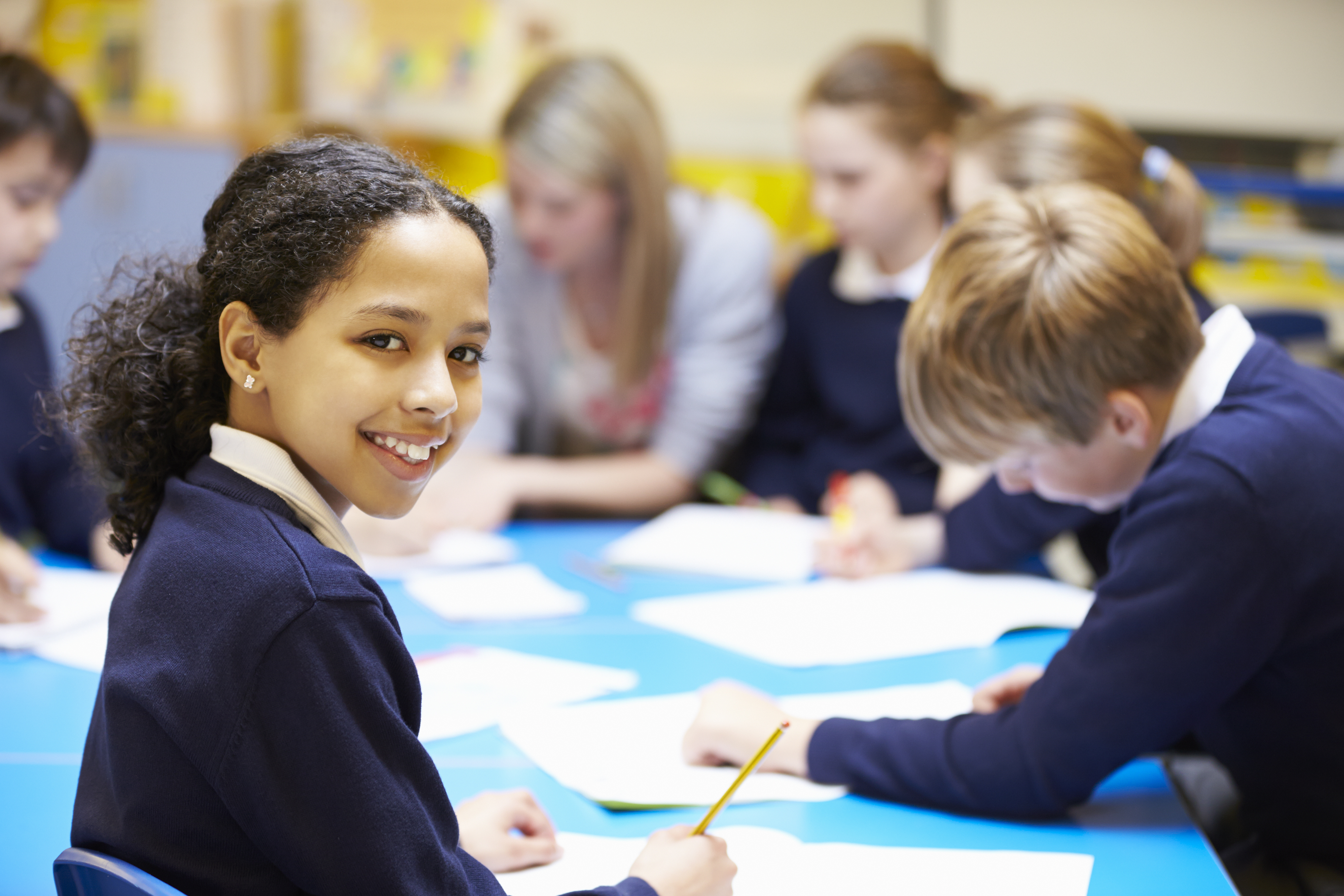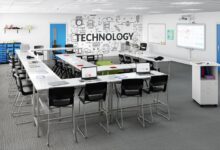School libraries: All-round learning hubs
Explore the changing nature of school libraries, and how they can be adapted to accommodate the learning needs of 21st century students.

As education changes and evolves, the library remains one of the most important spaces in a school. Of course, access to books remains integral to education for children of all ages. Books help children develop early literacy skills, understand history and culture, help to develop traditional research methods, and of course, foster a love of reading.
Read the Term 2 edition of School News HERE
The modern school library, though, is home to more than just books. Technology, and the way students are taught and learn is changing. Access to digital resources and technologies is integral for all students. Increasingly, school libraries are becoming dynamic learning hubs, giving students access to technology and providing space for different activities and learning styles.
School libraries, digital literacy and reading engagement are interdependent. The school library and staff play a critical role in helping to create a school culture that supports and encourages reading for pleasure, and digitally literate students. Digital literacy, in turn, needs proficient and engaged readers. School libraries are most effective, then, when they combine specialised staff, resources, and space.

For students who might otherwise be disadvantaged, the library can provide the resources, technology, and stories they need. Books for reading or reference, as well as computers with internet access and digital learning tools can help ensure all students have the tools to learn. Libraries are a place where all are welcome, providing a safe place to share stories and ideas; they offer a haven for young people, and a chance to escape to another world.
With the variety of activities taking place in the library, there is often a need for different zones. Quiet areas for independent reading or study, as well as space for collaborative group work, meetings, and community gatherings are just some of the zones libraries need. Specialist meeting rooms with access to interactive smart screens can replicate real-world spaces school leavers may find themselves in. Helping students become proficient in using this type of technology is essential to ensure they are ready for work or further study when they leave school.
Modern school libraries act as a meeting place for students, teachers, and in some instances, the community. The space needs to remain flexible to accommodate different groups, whether they be engaging in learning activities or meetings. The ability to easily transform a space is invaluable in a busy school environment. As with other flexible spaces in a school, furniture on wheels or that can be easily moved is key.

Building or thinking of redesigning your library? School News asked some industry experts for their tips on creating the perfect space.
When designing the layout for a library, Jaime Hallet from Sebel considers modular furniture important, as it allows educators to create settings for all ages. “Products selected should be fun, flexible and comfortable. Easy to move modular seats that can be configured in a multitude of ways can be used to create breakout spaces for collaboration and informal learning. Pulling apart modular seating settings can also create single seating that helps with individual learning.
“Furniture can assist with creating zones within a library for different modes of learning. Low level seating like floor cushions and mats can be used as a fun and comfortable way to create breakout areas without compromising on space. Modular furniture, like soft seating, paired with tables that have castors can be easily moved around the room to create an environment for either collaboration or individual learning.
“Tables that include several different shapes that fit together for group learning or can breakout on their own into individual learning are popular among both junior and senior levels.
“Schools are choosing bright coloured furniture or patterned fabrics to bring fun and engagement into the learning environment. They are also going for vinyl finishes in vibrant colours as they are easy to clean. We always recommend planning what happens in the space before selecting the furniture products that are right for you,” Ms Hallet said.

When designing a new library or refurbishing an existing one, Jeff Morren, Managing Director of IntraSpace said there are some common points to consider.
Firstly, Mr Morren suggests you should consider aesthetics and function. “Deciding on the look and feel of the area needs to be coupled with how functional and practical it will be for users. Look at existing library spaces that may suit your requirements then incorporate your own design into the plans. This makes it easier to convey your ideas to the experts.
“Volume or capacity of books is the next thing to consider. Do you want the same volume of books, are you culling the collection, or do you neeed to future-proof the space to allow for growth? This provides ideas of how much shelving you’ll need.”
Thirdly, Mr Morren said schools should consider the use of space and traffic flow. “Creating smaller reading and group study areas can effectively break up the space. Mobile shelving allows for efficiently rearranging to suit varied activities.
“Finally, you will need to decide whether to DIY or seek the pros. After your initial research on the above considerations, it is best to seek professional advice from library specialists. Not only will this save you time but also help maximise your budget to get effective, efficient, and enduring results.”
Furnware Product Manager Christine Shing said libraries are transforming as education evolves. “Modern libraries are places of experience and discovery with centrally located resources and easy technological access. The careful combination of various design elements brings a modern library vision to life.

“Some key aspects are colour, light, furniture, noise levels and connectivity. Soft furnishing, for instance, brings colour and comfort to the library and helps to soften noise. In a lively library, acoustics become very important – ceilings, walls, floors, and furniture all have a role to play in dampening sound.
“Choosing furniture of differing heights, innovative shelving solutions and combining hard surfaces with soft materials will help create zones that naturally attract students to engage in specific activities. For digital discovery, ensure easy online access throughout the library.
“Great libraries make everyone feel welcome. Mobile furniture that is flexible and agile accommodates multiple activities and supports students wherever they like to learn.
“Soft furniture, floor cushion pads and study nooks are perfect for creating focus or social zones. Tables with whiteboard surfaces encourage collaborative learning, and Lego tables with built-in storage keep everything tidy.
“For flexible seating, there is a trend towards offering various seating options and heights, from cushion-type floor seating to sitting-height student chairs, to modular couches and ottomans, through to high stools. This creates a dynamic environment providing options for all learning activities and giving students a greater choice of where and how they best like learning.”
Annabel Parletta from Resource Furniture said libraries should utilise natural light as much as possible. “Large windows with beautiful views, are best for quiet reading, breakout or study areas. Students are more likely to stay and read or study in the library if they have a cosy spot near a window.
“Keeping shelving low at the front of the library creates great visibility throughout the library space. High shelving can make the library look smaller and dull in some areas. It also provides staff a great line of sight,” Ms Parletta said.

“Mobile library shelving, can be configured to create nooks and study spaces, can can also help to reduce noise. This is useful if a class is working in the library, while other students are studying independently. It also provides flexibility to open up the space to create larger areas.
“Mobile flip tables are a great for older students. They can be used for quiet study group collaboration. A top tip would be to include table sizes that can be grouped together. For example, 1600 wide by 800 deep. This size is perfect for two students but can also be clustered together in groups for several students. Mobile tables can also be flipped and stacked to the side if the space is required for other activities.
“Organic shapes complementing the surrounding environment and complementary colours have been recent design trends, especially blues and oranges for junior primary areas. Products such as round ottomans and low stools that can easily be moved and reconfigured have been very popular.”







